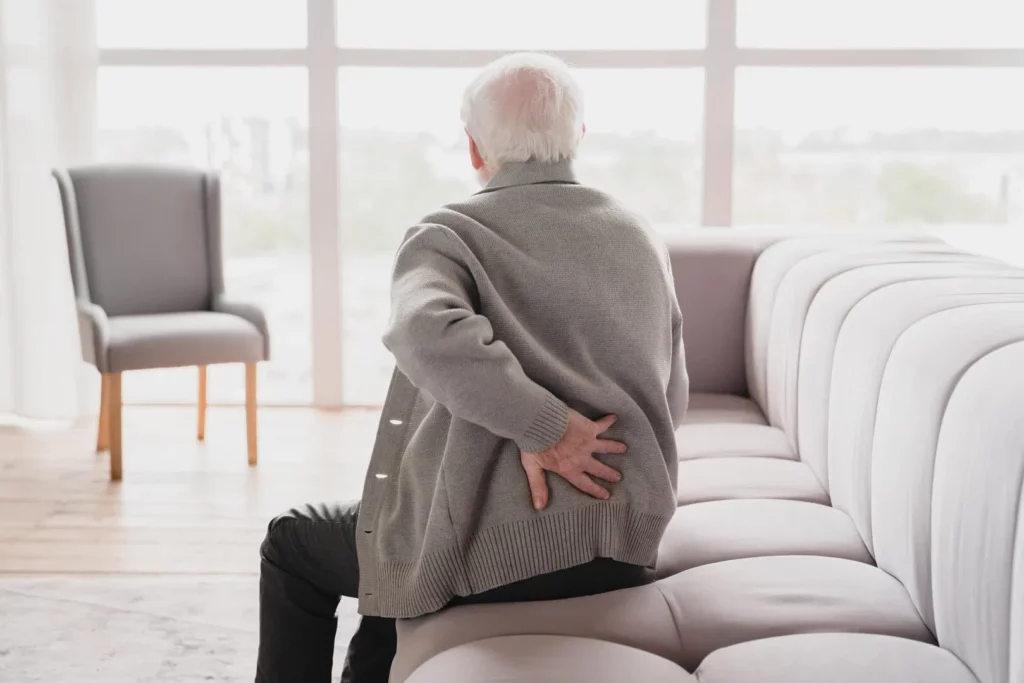Spondylosis, commonly known as spinal osteoarthritis, is a degenerative condition that affects the spine’s joints and bones. It is often associated with aging and can lead to chronic pain and stiffness. There are many effective treatments for spondylosis, and early diagnosis is critical for managing symptoms and improving quality of life.
Understanding Spondylosis
Spondylosis refers to the general wear and tear on the spinal discs and joints. This degeneration typically occurs as a part of the aging process but can be accelerated by factors such as injury, repetitive strain, or genetic predisposition. Over time, the discs lose hydration and elasticity, which can lead to disc herniation and bone spurs.
The most common symptoms include persistent back or neck pain, stiffness in the spine, and reduced flexibility. Some individuals may experience nerve compression symptoms such as tingling, numbness, and weakness in the limbs.
Diagnosing Spondylosis
Common diagnostic procedures include physical examinations where doctors check for pain points, range of motion, and nerve function. Imaging tests like X-rays, MRI scans, and CT scans are crucial for visualizing the extent of spine degeneration and for planning treatment strategies.
Treatment Options for Spondylosis
Non-Surgical Treatments for Spondylosis
Non-surgical treatments are often the first approach to managing spondylosis, aiming to alleviate pain, improve function, and slow the progression of the condition. These treatments include physical therapy, medications, and lifestyle modifications.
Physical Therapy
Physical therapy is essential for strengthening the muscles that support the spine, increasing flexibility, and reducing spinal load. A strong, flexible back is better able to handle stresses and can be less prone to injury.
Therapists may use exercises that focus on stretching and strengthening. Manual therapy techniques such as massage and mobilization can also help to relieve pain and improve movement. These custom exercise programs are designed based on individual needs to ensure maximum benefit. Regular sessions with a physical therapist can provide education on proper body mechanics which helps in managing symptoms over the long term.
Medications
Nonsteroidal anti-inflammatory drugs, such as ibuprofen and naproxen, are commonly used to relieve pain and reduce inflammation. These medications are available over the counter and can be used for managing short-term symptoms of spondylosis.
For more severe cases, corticosteroid injections may be administered directly into the affected area to provide rapid relief of inflammation and pain. These are typically considered when other medications do not provide adequate relief.
Lifestyle Modifications
Implementing ergonomic adjustments in the workspace or at home can significantly reduce strain on the spine. This includes setting up a workstation to promote good posture, using chairs with proper support, and taking regular breaks to stretch.
Maintaining a healthy weight will also help reduce the burden on the spine and joints, decreasing the risk of further deterioration. Nutritional counseling may be part of a comprehensive treatment plan.
Chronic stress can tighten the muscles, which may exacerbate pain. Techniques such as mindfulness, yoga, and meditation can help manage stress and reduce the overall impact of spondylosis.

Surgical Treatments for Spondylosis
When non-surgical treatments for spondylosis are not effective in relieving pain or when significant neurological deficits develop, surgery may be recommended. The goal of surgery is to relieve pain, restore function, and stabilize the spine. Here are some of the most common types of surgeries performed for spondylosis:
Decompression Surgery
This type of surgery aims to relieve pressure on spinal nerves, which can be caused by herniated discs, bone spurs, or thickened ligaments. Common decompression procedures include:
- Laminectomy: This involves removing part of the vertebra (the lamina) to create more space for the nerves.
- Foraminotomy: This surgery enlarges the opening where nerve roots exit the spinal column, relieving pressure caused by compression.
- Discectomy: Often performed as part of a laminectomy, this procedure involves removing a portion of a herniated disc that is pressing on a nerve.
Spinal Fusion
This surgery involves joining two or more vertebrae together to stabilize the spine and provide relief from severe pain caused by movement. Spinal fusion can be done using various techniques, including:
- Posterolateral Fusion: Bone grafts are placed between the affected vertebrae on the sides of the spine, and metal hardware is used to secure the spine while the bones fuse.
- Interbody Fusion: This involves removing the damaged disc and replacing it with a bone graft or a synthetic device in the disc space to help fuse the bones together. Common approaches include anterior lumbar interbody fusion (ALIF), posterior lumbar interbody fusion (PLIF), and transforaminal lumbar interbody fusion (TLIF).
Disc Replacement
In select cases, rather than fusing the spine, the damaged disc is replaced with an artificial disc to preserve more natural mobility of the spine and reduce stress on adjacent structures.
Minimally Invasive Spine Surgery (MISS)
These techniques are increasingly preferred for their reduced tissue damage, shorter recovery times, and decreased postoperative pain. Procedures such as minimally invasive decompressions or fusions use smaller incisions and specialized instruments to achieve the same goals as traditional surgery.
When Surgery is Considered
Surgery for spondylosis is typically considered only after conservative treatments have been exhausted and if the patient’s quality of life is significantly affected by pain or functional limitations. Indications for surgery may include intractable pain, progressive neurological deficits (such as muscle weakness, numbness, or impaired bowel and bladder function), or structural instability of the spine.
The specific type of surgery recommended depends on the location of the spondylosis, the specific spinal structures involved, and the overall health and lifestyle of the patient. Decisions about surgical treatments are made on a case-by-case basis, taking into account all factors that could affect the outcome. Patients considering surgery should discuss the potential risks and benefits with their spine specialist to make an informed decision.
Living with Spondylosis
Managing spondylosis involves regular physical activity, proper posture, and possibly using assistive devices for mobility if symptoms are severe. The long-term outlook can vary, but many individuals manage their condition successfully with a combination of treatments.

Spondylosis Treatment at the Insitute for Comprehensive Spine Care
At The Institute for Comprehensive Spine Care, we understand that dealing with spondylosis and its associated symptoms can be challenging. Led by Dr. Gbolahan Okubadejo, a board-certified orthopedic surgeon, our team is dedicated to providing the highest standard of care. With a deep commitment to patient education and personalized treatment plans, we ensure that every patient receives the attention and care necessary to improve their quality of life.
We believe in a multidisciplinary approach to spine health, integrating non-surgical treatments with advanced surgical techniques when necessary. Our team is highly skilled in both traditional and innovative procedures, aiming to achieve the best possible outcomes with minimal downtime.
We also recognize the importance of accessibility for our patients. With multiple locations across New York and New Jersey, receiving top-tier spine care is more convenient than ever.
Don’t let spondylosis control your life. Trust the experts at The Institute for Comprehensive Spine Care to help you return to a life of activity and comfort. Schedule your consultation today and take the first step towards a pain free life.
Treatments for Spondylosis FAQs
What are the first signs of spondylosis?
The initial signs often include lower back or neck pain that worsens with activity but improves with rest.
Can spondylosis be cured?
While there is no cure for spondylosis, many treatments are available to help manage symptoms and slow progression.
What lifestyle changes help manage spondylosis symptoms?
Regular exercise, maintaining a healthy weight, and avoiding smoking can significantly help in managing the symptoms.
How long does treatment for spondylosis last?
Treatment duration varies depending on the severity of symptoms but often includes long-term management strategies.
Are there exercises that can prevent spondylosis?
While no specific exercises can prevent spondylosis, maintaining overall spinal health through regular strength and flexibility workouts can reduce risk.








